The world of investing has been continuously evolving, and the rise of emerging market ETFs has been gaining traction in recent years.
For Canadian investors, delving into emerging markets presents a unique opportunity to tap into the rapid growth of countries that are on the cusp of major economic breakthroughs.
Emerging markets make up over 80 percent of the world’s total population and are responsible for almost 80 percent of global GDP growth.
We will cover the best emerging market ETFs in Canada below and discuss some of their features.
What to Look for in a Good Emerging Market ETF
There are several things to consider before investing in an emerging market ETF.
- Geographical Allocation – How an emerging market’s ETF is allocated between countries is extremely important to consider. Make sure that the ETF you are considering isn’t too heavily concentrated in any one specific country.
- Fees – Unless a strategy is actively managed and has an excellent track record of active management, it’s best to look for ETFs that cost as little in fees as possible. This is especially true for passive funds.
- Assets Under Management – An ETF with a large level of assets under management is desirable. ETFs that have too few assets are at risk of closing down early in the future due to a lack of profitability.
- Liquidity: Ensure the ETF has a decent trading volume. A higher average trading volume usually means tighter bid-ask spreads, making it easier and less costly to buy or sell shares.
- Performance Track Record: While past performance is not indicative of future results, analyzing an ETF’s historical returns compared to its benchmark can give you an idea of its management’s effectiveness.
- Dividend Yield and Payout: If dividends are important to you, consider the ETF’s yield and how consistently it pays out dividends. This can be a source of regular income for some investors.
- Geopolitical Risks: As these are emerging markets, understanding the geopolitical scenario is critical. Changes in trade policies, political instability, or economic reforms can significantly impact returns.
Best Emerging Markets ETFs in Canada
- Vanguard FTSE Emerging Markets All Cap Index ETF (VEE.TO)
- Horizons Emerging Markets Equity Index ETF (HXEM.TO)
- BMO MSCI Emerging Markets Index ETF (ZEM.TO)
- iShares ESG Aware MSCI Emerging Markets Index ETF (XSEM.TO)
- CIBC Emerging Markets Equity Index ETF (CEMI.TO)
- Invesco S&P Emerging Markets Low Volatility Index ETF (ELV.TO)
- AGFiQ Emerging Markets Equity ETF (QEM.TO)
1. Vanguard FTSE Emerging Markets All Cap Index ETF

- Ticker: VEE.TO
- Currency: CAD
- Inception Date: November 30, 2011
- Assets under Management: $1.64 Billion
- Management Expense Ratio: 0.24%
- Listed on: Toronto Stock Exchange
- Dividend Yield: 2.83%
- Approximate Holdings: 5400
- Management Style: Passive
- Risk Rating: Medium
- Distribution Frequency: Quarterly
- Stock Price: $32.67
- YTD Return: -2.17%
Vanguard offers a great emerging markets ETF here in Canada. VEE invests in emerging market stocks of all market capitalizations (companies that are big, medium-sized, and small). It is a passive strategy that tracks the FTSE Emerging Markets All Cap China A Inclusion Index.
VEE is fairly concentrated in Chinese companies, with over a 30% geographical allocation to China. Other countries with a sizable allocation include India and Taiwan.
The ETF has a long performance track record and has amassed a very high level of assets under management. With regards to its MER, VEE comes with one of the lowest fees for a passive, emerging markets ETF on the Canadian shelf.
The ETF pays a decent yield and pays distributions to investors on a quarterly basis. VEE has over 5,000 holdings, making it extremely well-diversified (and likely over-diversified). The medium risk rating of the fund is likely understated, as most emerging market investments are at least medium-to-high risk.
As a low-cost option with a long track record and a large AUM number, VEE is a great emerging markets ETF to consider for your portfolio.
2. Horizons Emerging Markets Equity Index ETF
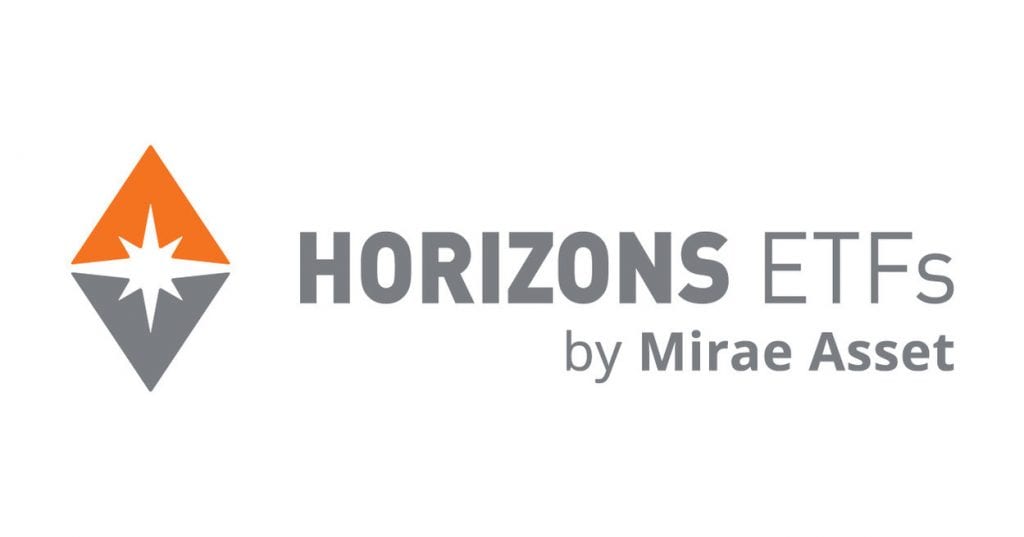
- Ticker: HXEM.TO
- Currency: CAD
- Inception Date: August 5, 2020
- Assets under Management: $87.76 Million
- Management Expense Ratio: 0.25%
- Listed on: Toronto Stock Exchange
- Dividend Yield: N/A
- Approximate Holdings: Not Disclosed, Uses an Index Swap
- Management Style: Passive
- Risk Rating: Medium
- Distribution Frequency: None
- Stock Price: $32.54
- YTD Return: -3.35%
Horizons’ HXEM ETF is an emerging market ETF choice that is more tax efficient for non-registered accounts. HXEM, like most Horizons total return ETFs, uses a swap on an emerging markets index to generate returns (and does not hold the underlying stocks).
The ETF passively tracks the Horizons Emerging Markets Futures Roll Index (Total Return). It invests mainly in large-cap and mid-cap securities in emerging markets.
HXEM has a very short performance track record and is a small ETF in terms of assets under management. From a fee perspective, it is inexpensive relative to most emerging markets ETFs in Canada.
Since the ETF uses a swap strategy, it aims to not pay any distributions to investors. This generally improves the tax efficiency of an investment, especially when considering foreign dividends. Investors pay an additional swap fee for this ETF structure.
HXEM’s medium-risk rating is likely understated and should be closer to a medium-high-risk rating.
If you are looking for an emerging markets ETF to add to your non-registered portfolio, HXEM is a good option from a tax-efficiency perspective.
3. BMO MSCI Emerging Markets Index ETF
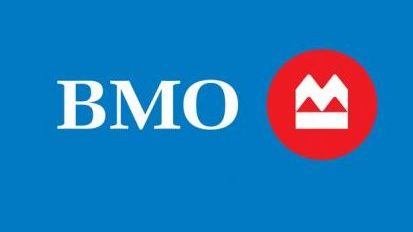
- Ticker: ZEM.TO
- Currency: CAD
- Inception Date: October 20, 2009
- Assets under Management: $1.26 Billion
- Management Expense Ratio: 0.27%
- Listed on: Toronto Stock Exchange
- Dividend Yield: 2.87%
- Approximate Holdings: 775
- Management Style: Passive
- Risk Rating: Medium
- Distribution Frequency: Annually
- Stock Price: $19.05
- YTD Return: -3.54%
BMO has an emerging markets ETF on its product shelf here in Canada. ZEM has the ability to hold other underlying ETFs but mainly follows a passive strategy. It follows the MSCI Emerging Markets Index.
The ETF has an allocation of over 30% to China, with other large allocations to Taiwan, India, and South Korea. ZEM largely focuses on large-cap and mid-cap stocks across 26 emerging market countries.
ZEM has a very long performance track record and an enormous AUM level. From a fee perspective, it is also priced on the inexpensive side of emerging markets ETFs in Canada.
The ETF offers a good dividend yield, with distributions being paid to investors on an annual basis. With over 750 underlying holdings, the ETF is very well diversified.
ZEM’s risk rating is likely understated and should be closer to medium-high.
If you are looking for a low-cost ETF with great overall features, BMO’s ZEM is an excellent option.
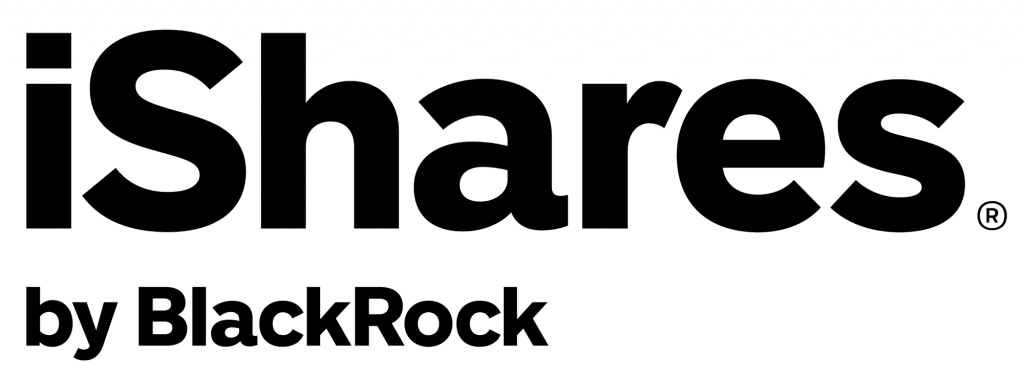
- Ticker: XSEM.TO
- Currency: CAD
- Inception Date: March 18, 2019
- Assets under Management: $2.67 Billion
- Management Expense Ratio: 0.36%
- Listed on: Toronto Stock Exchange
- Dividend Yield: 1.13%
- Approximate Holdings: 320
- Management Style: Passive
- Risk Rating: Medium
- Distribution Frequency: Semi-Annually
- Stock Price: $18.57
- YTD Return: -4.05%
Blackrock’s iShares lineup offers an interesting emerging markets strategy in Canada. XSEM is an ETF that invests in emerging markets while also adhering to ESG (environment, social, and government) principles.
The strategy invests in mid-cap and large-cap stocks with a passive approach. It tracks the MSCI Emerging Markets Extended ESG Focus Index. XSEM has a weight of over 30% to China as well as significant weight toward Taiwan, India, and South Korea.
XSEM has a short performance track record and is a small ETF in terms of assets under management. From a fee perspective, XSEM has a fairly inexpensive MER. The ETF offers a low yield, with distributions being paid to investors semi-annually.
XSEM has fewer holdings than most ETFs on our list but is still more than adequately diversified. The ETF’s risk rating should also likely be closer to medium-high.
If you are looking for an emerging markets ETF that is aligned with responsible investing, XSEM is a good option to consider.
5. CIBC Emerging Markets Equity Index ETF
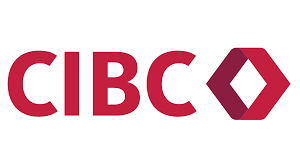
- Ticker: CEMI.TO
- Currency: CAD
- Inception Date: September 16, 2021
- Assets under Management: $57.93 Million
- Management Expense Ratio: 0.22%
- Listed on: Toronto Stock Exchange
- Dividend Yield: 2.75%
- Approximate Holdings: 1500
- Management Style: Passive
- Risk Rating: Medium-to-High
- Distribution Frequency: Annually
- Stock Price: $16.91
- YTD Return: -3.16%
CIBC’s emerging markets ETF is another low-cost option to consider for your portfolio. CEMI focuses on emerging countries in Asia, Latin America, Europe, Africa, and the Middle East. It is another passive strategy, this time tracking the Morningstar Emerging Markets Target Market Exposure Index.
The ETF has over 30% of its holdings in China. The next three largest countries are Taiwan, India, and South Korea.
CEMI has a very short performance track record, with its inception date in 2021. In terms of AUM, it is a very small ETF, which puts it at risk of closing down in the near future if it can’t attract additional capital.
From a fee perspective, it is one of the most inexpensive emerging markets ETFs available to Canadians. CEMI has a great dividend yield but only pays distributions on an annual basis. With around 1,500 underlying holdings, it is extremely well diversified.
Its medium-to-high risk rating is fairly standard for an emerging market fund.
We recommend waiting on a performance track record to develop as well as for some AUM growth before investing in CEMI.
6. Invesco S&P Emerging Markets Low Volatility Index ETF
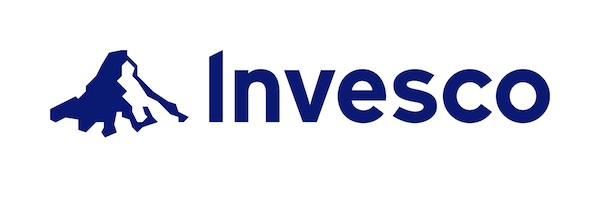
- Ticker: ELV.TO
- Currency: CAD
- Inception Date: July 11, 2014
- Assets under Management: $6.77 Million
- Management Expense Ratio: 0.35%
- Listed on: Toronto Stock Exchange
- Dividend Yield: 3.15%
- Approximate Holdings: 200
- Management Style: Passive
- Risk Rating: Medium
- Distribution Frequency: Annually
- Stock Price: $19.26
- YTD Return: 0.9%
Invesco offers an emerging markets ETF in Canada designed to reduce overall volatility. ELV is a passive strategy that tracks the S&P BMI Emerging Markets Low Volatility Index. The focus of the strategy is on large-cap and mid-cap stocks.
The ETF has over 30% exposure to Taiwan, with other large allocations toward Saudi Arabia and China. Relative to most ETFs on our list, ELV has a significantly lower allocation to Chinese equities.
ELV has a long performance track record and is a very small ETF. Its asset size does put it at risk of closing in the future if it does not manage to attract more assets.
From a fee perspective, it comes with a fairly average MER for a passive emerging markets strategy. With roughly 200 holdings, it is still exceptionally well diversified across underlying positions.
ELV offers a great dividend yield, with distributions being paid out annually.
ELV is a good, lower-volatility option to consider in the future, especially if it manages to attract more assets.
7. AGFiQ Emerging Markets Equity ETF
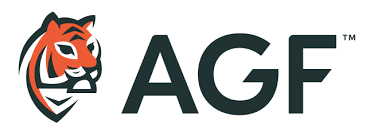
- Ticker: QEM.TO
- Currency: CAD
- Inception Date: January 30, 2017
- Assets under Management: $47.44 Million
- Management Expense Ratio: 0.45%
- Listed on: Toronto Stock Exchange
- Dividend Yield: 2.43%
- Approximate Holdings: 115
- Management Style: Quantitative/Active
- Risk Rating: Medium
- Distribution Frequency: Annually
- Stock Price: $23.6
- YTD Return: -2.31%
AGF, a large investment manager in Canada, offers an interesting emerging markets ETF. Unlike most ETFs on our list, the strategy is quantitatively managed based on several factors. This contrasts with most of the passive strategies on our list.
The ETF has an allocation of over 30% to China, with Taiwan and South Korea also carrying heavy weight.
QEM has a short performance track record and is a fairly small ETF in terms of assets. From a fee perspective, it is relatively more expensive than the other ETFs on our list. The strategy does benefit from quantitative and active management, unlike the other ETFs.
QEM offers a good dividend and pays distributions to investors on an annual basis. It is fairly well diversified, with over 100 underlying stocks. From a risk rating perspective, it should likely be labelled as a medium-high risk strategy.
If you are looking for more portfolio manager involvement within your emerging markets ETF, QEM is a great option to consider.
Tax Efficiency of Emerging Market ETFs
One of the often-overlooked advantages of ETFs is their tax efficiency, especially when compared to mutual funds.
ETFs have a unique structure that allows investors to buy and sell shares among themselves, without the fund itself having to sell its underlying assets. This can reduce capital gains distributions and thereby the tax liability for investors.
Take, for example, the Horizons Emerging Markets Equity Index ETF. This ETF uses a swap strategy, which means it doesn’t hold the actual stocks but a contract that replicates the index’s performance. This structure is generally more tax-efficient, especially concerning foreign dividends.
Active Vs Passive Management of Emerging Market ETFs
The debate between active and passive management is a constant battle in the ETF community.
Actively managed ETFs employ a manager or team to handpick the securities in the fund, with the goal of outperforming a particular benchmark. On the other hand, passively managed ETFs simply track a specific index, aiming to replicate its returns.
Most emerging market ETFs in Canada follow a passive approach. They aim to replicate the returns of a specified index. The main advantage here is the low expense ratios, as passive funds tend to have lower fees than actively managed ones.
However, some might argue that emerging markets, with their unique challenges, might benefit from the scrutiny of active managers who can navigate the complexities of these markets. Here is a table that compares the two:
| Feature | Active Management | Passive Management |
| Objective | Outperform a specific benchmark. | Track and replicate a specific benchmark. |
| Strategy | Managers use research, analysis, and their judgment to select individual securities and decide when to buy or sell them. | Designed to replicate a specific index. Buys and holds all, or a representative sample, of the securities in the index. |
| Management Fees | Typically higher due to the research and analysis involved. | Typically lower as it aims to simply mimic an index. |
| Trading Costs | Potentially higher due to more frequent trading. | Usually lower due to less frequent trading. |
| Performance Variation | Can outperform or underperform its benchmark due to manager decisions. | Close to benchmark performance, minus fees and expenses. |
| Tax Efficiency | Might be less tax-efficient due to frequent trades leading to capital gains. | Often more tax-efficient due to less turnover. |
| Transparency | Holdings can change frequently and may not be disclosed daily. | Holdings mirror an index and are usually disclosed daily. |
| Risk | Can be more or less risky than its benchmark, depending on manager choices. | Risk closely mirrors that of the benchmark index. |
Should you Invest in Emerging Markets ETFs?
Adding emerging market exposure to your portfolio can help diversify your investments and potentially increase returns over a long period.
Doing research on emerging market stocks or bonds can be extremely difficult to do, especially as an investor in Canada. Canadian retail investors are far detached from emerging market companies and usually have limited expertise and operations visibility.
Using an emerging markets ETF to properly diversify your exposure is an excellent approach to investing in these regions of the world.
How to Buy the Best Emerging Market ETFs in Canada
The cheapest way to buy ETFs is from discount brokers. My top choices in Canada are:
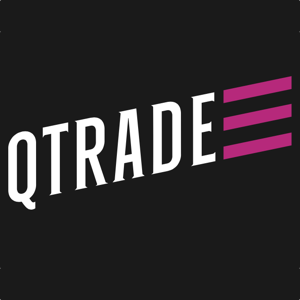
- 105 commission-free ETFs to buy and sell
- Excellent customer service
- Top-notch market research tools
- Easy-to-use and stable platform

- Stock and ETF buys and sells have $0 trading fees
- Desktop and mobile trading
- Reputable fintech company
- Fractional shares available
To learn more, check out my full breakdown of the best trading platforms in Canada.
FAQs
What are the risks of investing in emerging market ETFs in Canada?
Risks include geopolitical instability, currency fluctuations, differing regulatory environments, lower liquidity, and potential economic volatility in emerging markets. Additionally, market events in one country within the ETF can influence the entire fund.
How do emerging market ETFs in Canada compare to international ETFs?
Emerging market ETFs focus on countries with growing, but not yet fully developed, economies. In contrast, international ETFs typically cover both developed and emerging markets, providing broader global exposure. This difference can lead to variations in risk, return, and diversification.
Each provider may have differences in fee structures, index tracking, portfolio holdings, and reinvestment strategies. Vanguard is known for its passive, low-cost approach; iShares offers a wide range of product choices and might use different benchmarks; BMO might emphasize Canadian investors’ preferences and needs more.
Conclusion
Adding emerging market exposure to your portfolio is usually best done through an ETF as a retail investor.
The emerging markets ETFs in Canada are diverse and allow you to choose options based on your personal goals and preferences.
Before investing in a relatively higher-risk area of the stock market, make sure that you have properly assessed your goals and objectives.






Hi, just wondering about Wealthsimple Trade, as you mentioned they have desktop capability. I have not found that information on their website, so I am curious as to where this can be found.
Check it out here: https://help.wealthsimple.com/hc/en-ca/articles/1500003205181
I would appreciate your thoughts on ZEM for emerging markets.
Thank you.
Sorry I meant to add within an RESP.
Sorry. I meant to include that ZEM would be part of my granddaughter’s RESP.
Hey Paul, it depends on a lot of factors, like your risk tolerance and financial situation, and what percentage you’re planning to put into ZEM. For RESPs I generally like to keep things simple and go for a broader market strategy such as an all-in-one ETF portfolio, and avoid things like emerging market funds in an RESP.